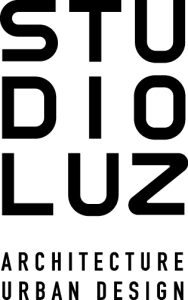south portland 2040
comprehensive plan
south portland, me
Community Engagement-Led Visioning Study
for Future Land Use and Preservation
Completion: 2024
Project Overview
The City of South Portland, Maine is undergoing community-focused comprehensive planning efforts to provide a foundation for future policies which will enrich the area’s economy, preserve its character and historical and archaeological resources, provide more opportunities for housing, recreation, and business, and address climate-related threats. Studio Luz was engaged by Lead Comprehensive Plan Consultant, JM Goldson and the City of South Portland to provide community engagement and design assistance for the Eastern Waterfront and Crosstown Connector sites, focusing on creating a cohesive development strategy with recommendations for future growth and resiliency.
Project Team
Hansy Better Barraza
Sophie Nahrmann
Paul Dahlke
Client
South Portland Planning Division
Municipality
City of South Portland
Lead Comprehensive Plan Consultant
JM Goldson
Environmental Consultant
Woodard & Curran
Economic Consultant
Cambridge Econometrics
INFORMED ENGAGEMENT
ANALYSIS-DRIVEN PLANNING
Informed decision making is an important part of responsible planning. Studio Luz analyzed current land usage, zoning, environmental constraints, ownership, vehicle and pedestrian networks, freight patterns, and development likelihood for each of the neighborhoods in order to inform community feedback and the resulting design recommendations.
COMMUNITY AT THE CORE
FOR THE COMMUNITY, WITH THE COMMUNITY
A community knows its area’s needs best. Studio Luz designed active community engagement activities to inspire the community to show us their own ideal futures for South Portland. By working in groups, neighborhood members were able to discuss prompts at length, while designing the area block-by-block to inform our design recommendations directly.
PLANNING FOR RESILIENCE
waterfront CLIMATE + FISCAL RESILIENCE
South Portland’s waterfront poses both opportunities and threats. Studio Luz proposed dynamic, mixed use areas along Front Street, fostering economic activity pedestrian-friendliness, while incorporating resilient design such as elevated berms and retention ponds to address flooding risks. Linear parks and pathways link the area to the Greenbelt for better pedestrian engagement, while providing climate resiliency.











ABOUT THE engagement + planning study
in south portland, me
Studio Luz was engaged by JM Goldson and the City of South Portland to provide community engagement and design assistance for the Eastern Waterfront and Crosstown Connector sites, focusing on creating a cohesive development strategy with recommendations for future growth and resiliency. Studio Luz collaborated with city staff, consultants, and community stakeholders to address housing diversity, coastal resiliency, and community integration. This process led to the development of a hybrid plan that balances single-family, mixed-use, and multi-family housing while incorporating sustainable infrastructure and public amenities to enhance connectivity and activate the waterfront.
The Eastern Waterfront Site is positioned at the nexus of South Portland’s urban fabric and its coastal edge, offering a unique opportunity to address the city’s pressing needs for resilient, community-centered development. The site is characterized by its proximity to existing neighborhoods, which informed the design’s careful scale transitions and integration of public spaces, ensuring alignment with the surrounding context. The plan includes a range of housing types and commercial spaces designed to foster economic vitality, while linear parks and pedestrian pathways enhance accessibility and public engagement with the waterfront.
This project strives to provide South Portland with a sustainable, community-focused development model that addresses critical challenges such as coastal flooding and housing demand. By combining innovative infrastructure solutions with locally informed design, the vision aims to strengthen the city’s social, economic, and environmental fabric. The approach emphasizes equitable development, ensuring that the Eastern Waterfront serves as a vibrant, accessible space for all.
